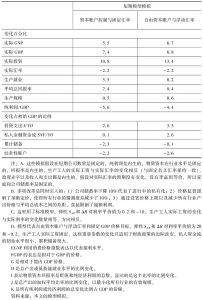章节
经济改革日程的短期效应
关键词
作者
张莹 ,任职于西澳大学商学院经济系。
检索正文关键字
章节目录
- 一 引言
-
二 中国的转型:重要改革的动机
- (一)储蓄
- (二)家庭储蓄
- (三)公司储蓄
- (四)政府储蓄
- (五)经常性账户余额
- 三 国际化和私人金融资金流的新角色
- 四 对实际汇率的特殊敏感性
-
五 中国经济的一个垄断模型
- (一)模型结构
- 1.宏观经济表现
- 2.实际模型中的短期效果
- 3.垄断供给
- (二)基础数据及其所代表的中国经济结构
- (一)模型结构
- 六 进一步的产业改革与短期增长
- 七 资本账户自由化
- 八 结论
相关文献
查看更多>>>













